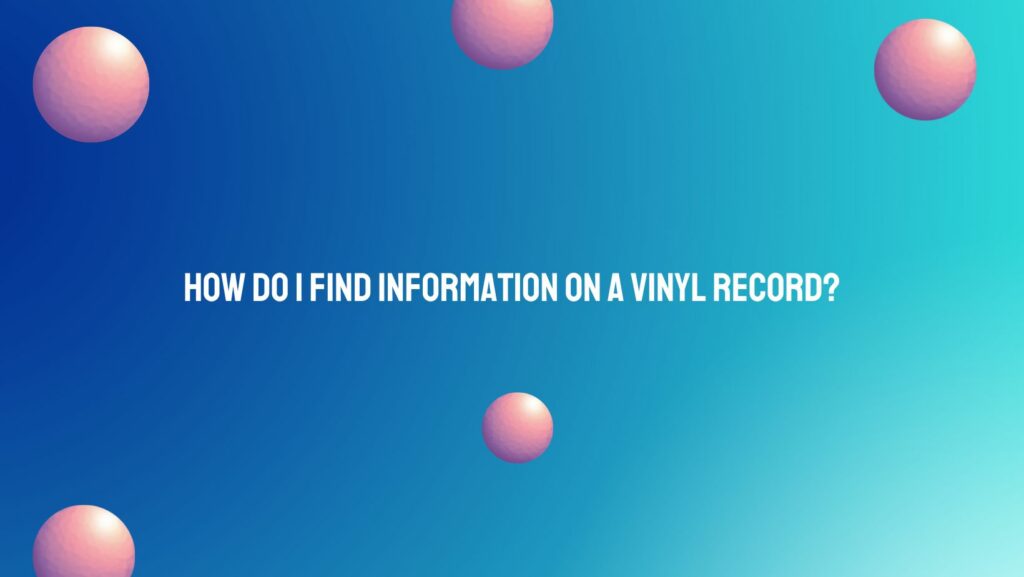Vinyl records, with their rich history and timeless appeal, often carry stories beyond the music they hold. Whether you’re a seasoned collector or a newcomer to the world of vinyl, discovering information about a record can deepen your connection to the music and the era it represents. In this guide, we’ll explore various avenues for unearthing details about your vinyl records, from artist credits to release dates and pressing variations.
- Album Art and Liner Notes: The Visual Prelude:
The album cover and liner notes are the first chapters in unraveling the story behind a vinyl record. Artist names, album titles, track listings, and often production credits are displayed on the cover or included within the liner notes. These details provide a starting point for your investigation.
- Record Labels: Clues in the Grooves:
Examining the record label is akin to deciphering a map. The label often carries crucial information such as the record company’s logo, catalog number, and copyright details. These elements can guide you to the record’s origin and sometimes reveal interesting facts about its production history.
- Catalog Numbers: Decoding the Vinyl DNA:
Every vinyl record is assigned a catalog number by the record label. This alphanumeric code acts as a unique identifier and can be instrumental in tracking down detailed information. The catalog number is typically found on the record label and sometimes etched into the run-out groove area.
- Matrix Numbers: The Enigmatic Etchings:
Turning the record over and examining the run-out groove area reveals matrix numbers – an alphanumeric code etched into the vinyl during the manufacturing process. These matrix numbers are like fingerprints, offering insights into the specific pressing, mastering engineer, and sometimes even the date of production.
- Online Databases: Digital Repositories of Vinyl Knowledge:
In the digital age, online databases such as Discogs, AllMusic, and RateYourMusic have become invaluable resources for vinyl enthusiasts. By entering the catalog or matrix number, you can access comprehensive information about the record, including release details, artist credits, and even user reviews. These databases often provide a collective knowledge base curated by a community of passionate collectors.
- Record Stores and Specialty Shops: Knowledgeable Allies:
Local record stores and specialty shops can be treasure troves of information. Staff members, especially those specializing in vinyl, may offer insights into the history of specific releases, variations, and the overall context of the music scene during the record’s release.
- Collector Communities: Shared Wisdom:
Engaging with collector communities both online and offline can open up avenues for information exchange. Forums, social media groups, and vinyl enthusiast gatherings provide platforms for sharing anecdotes, seeking advice, and learning from the experiences of fellow collectors.
- Artist Websites and Interviews: Direct Perspectives:
For a more personal touch, exploring artist websites or interviews can yield valuable insights into the creation of the record. Artists often share stories about the recording process, influences, and the historical context surrounding their work.
Conclusion:
Unearthing information about a vinyl record is a captivating journey that blends detective work with a passion for music history. Whether you’re examining visual cues, decoding catalog and matrix numbers, consulting online databases, or engaging with fellow collectors, the process of discovery enhances the overall experience of vinyl ownership. Each piece of information unveils a layer of the record’s narrative, connecting you not only to the music but also to the cultural tapestry that surrounds it.


